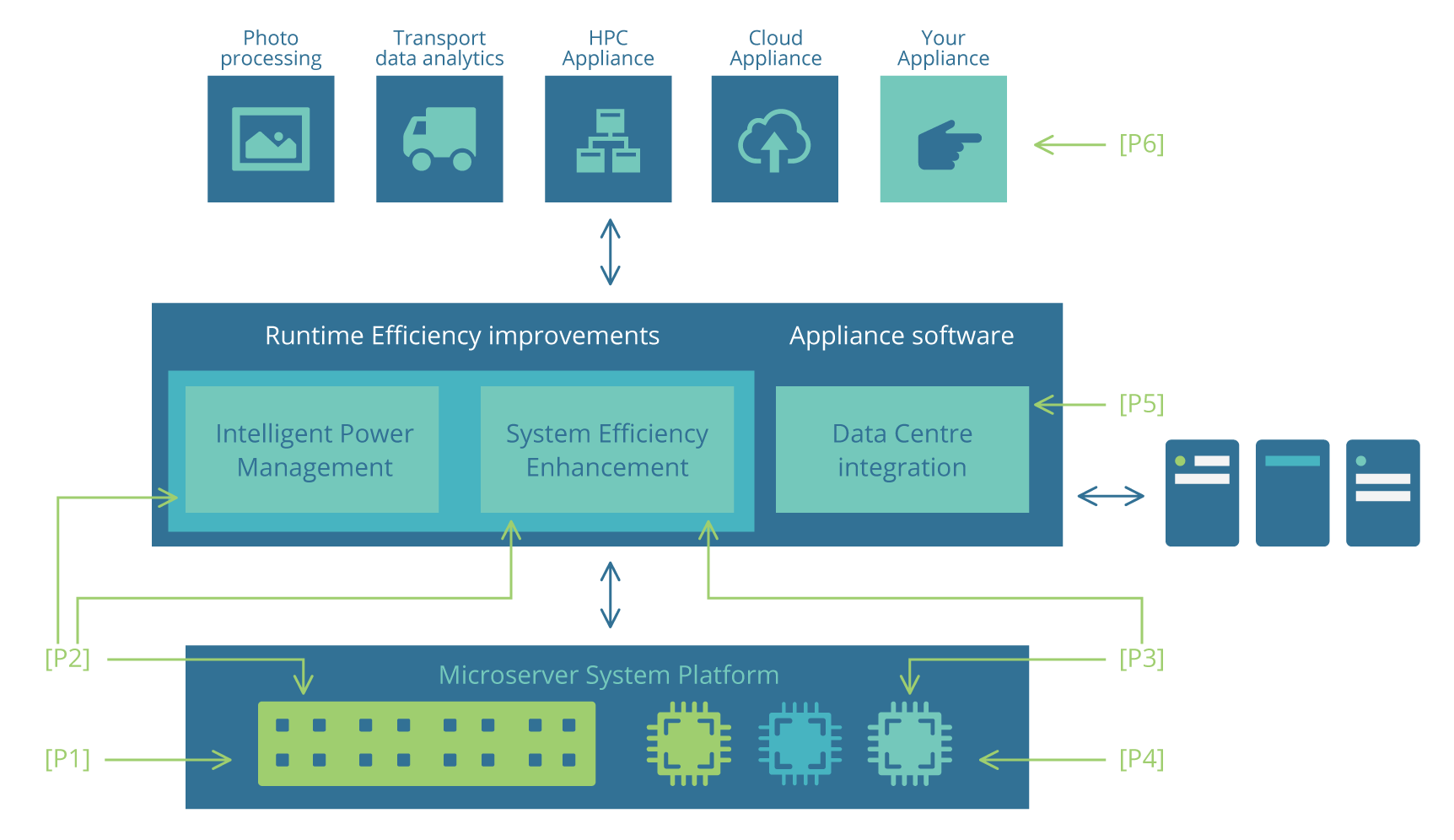M2DC is developing turnkey appliances based on a microserver system enabling to build use-case driven, modular, high-density data centres. The idea is to provide use cases in the form of turnkey appliances which can be easily configured, produced, installed and maintained. Thus, the main M2DC goal is to deliver a new class of appliances with the following properties:
- [P1] Low cost – taking into account the whole appliance lifecycle (purchase, operation, maintenance and refresh cycles) and the Total Cost of Ownership (TCO) optimisation,
- [P2] Low power and energy efficient – dramatically reducing power usage and heat dissipation while meeting Quality of Service (QoS) for key and emerging applications,
- [P3] Dependable by design – delivering built-in reliability and security by integrating fast and efficient monitoring and management functions,
- [P4] Versatile and scalable – easy to customise and update (software and hardware) to specific application types and large scales by seamless inclusion of heterogeneous and highly parallel computing resources,
- [P5] Easy to use and integrate with data centre ecosystems – easy provisioning, monitoring and management by modern DCIM (Data Centre Infrastructure Management), cloud and HPC software,
- [P6] Applicable to a variety of real-life applications – facilitating application and middleware programming, deployment, and optimization in order to use M2DC appliances for various important real-life applications.
To develop its appliances M2DC proposes a flexible server architecture [P4] that can be easily customised [P6], equipped with intelligent power management [P2] and integrated with well-defined interfaces to the surrounding software ecosystem [P5]. The server architecture is based on low power System on Chip (SoC) [P2] components accompanied by built-in enhancements (e.g. for performance acceleration, efficiency, dependability) on system level, thus delivering great efficiency while minimising the effort needed from users. M2DC appliances will enable TCO optimisation [P2][P3] for specific use cases and application areas. The overall costs will be lowered by the use of low cost microserver modules, decrease of energy consumption costs, and facilitating maintenance and integration with existing computing environments [P1]. Relations of this approach to the M2DC appliance properties are illustrated in Figure 1.
